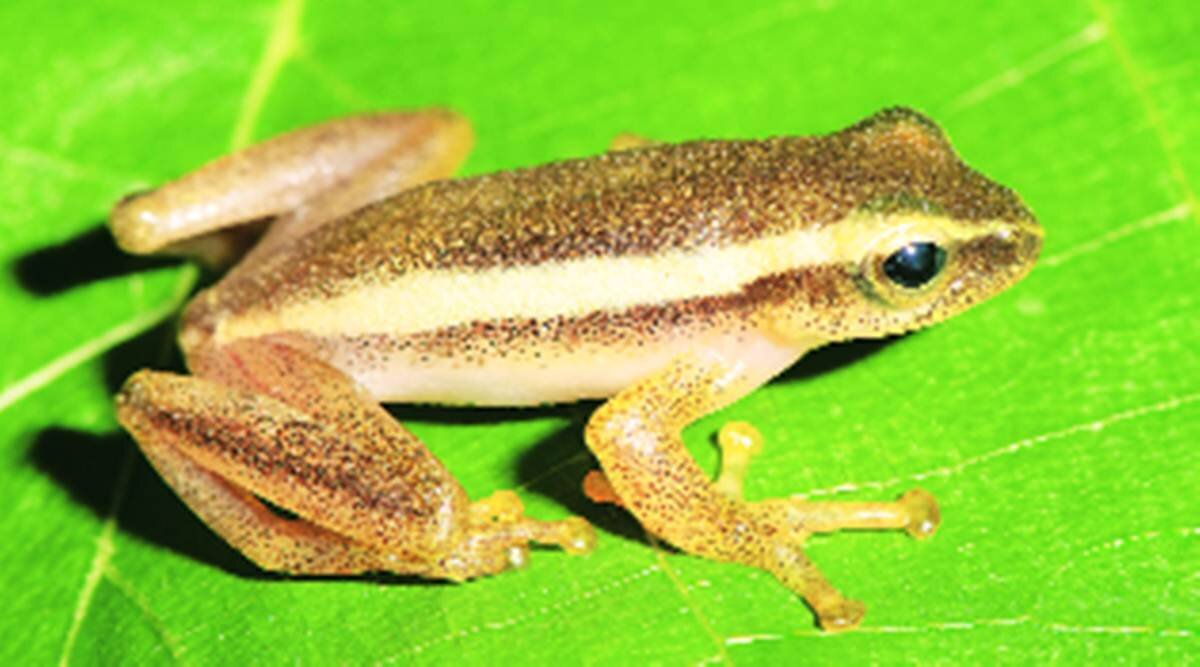Important Facts For Prelims
New Species in Andaman
- 13 Nov 2020
- 3 min read
Why in News
Recently a group of scientists has reported a new genus of treefrog from the Andaman Islands called Striped Bubble-nest frog.
Key Points
- Biological name: Rohanixalus vittatus
- The new genus ‘Rohanixalus’ is named after Sri Lankan taxonomist Rohan Pethiyagoda.
- Striped Bubble-nest frog belongs to the genus of the Old World treefrog family Rhacophoridae.
- This is the first report of a tree frog species from the Andaman Islands.
- Bodily Features
- Small and slender body (2-3 cm long).
- A pair of contrastingly coloured lateral lines on either side of the body. Minute brown speckles scattered throughout the upper body.
- Light green-coloured eggs laid in arboreal bubble-nests.
- Arboreal means living in trees or related trees
- They are also known as Asian Glass Frog or see through frogs.
- While the general background coloration of most glass frogs is primarily lime green, the abdominal skin of some members of this family is translucent (allowing light to pass through). The internal viscera, including the heart, liver, and gastrointestinal tract, are visible through this translucent skin, hence the common name.
- The genus has several unique behavioural traits:
- Maternal egg attendance:
- The female (mother) attends the egg clutches until hatching and assists in release of the tadpoles into the water.
- During the first three days after egg laying, the female sits over the eggs and produces a gelatinous secretion with which she glazes (covers) the egg mass through clockwise movement of her legs. This behaviour provides necessary moisture to the eggs laid on exposed leaf surfaces and protects them from insect predation.
- Community egg attendance:
- A large number of egg clutches (over 50) of different developmental stages on a single leaf or plant. Multiple females usually attend such clutches in a behaviour termed as ‘community’ egg attendance.
- Maternal egg attendance:
- Frequent male-male combats involving pushing, kicking and dislodging to mate with a female.





